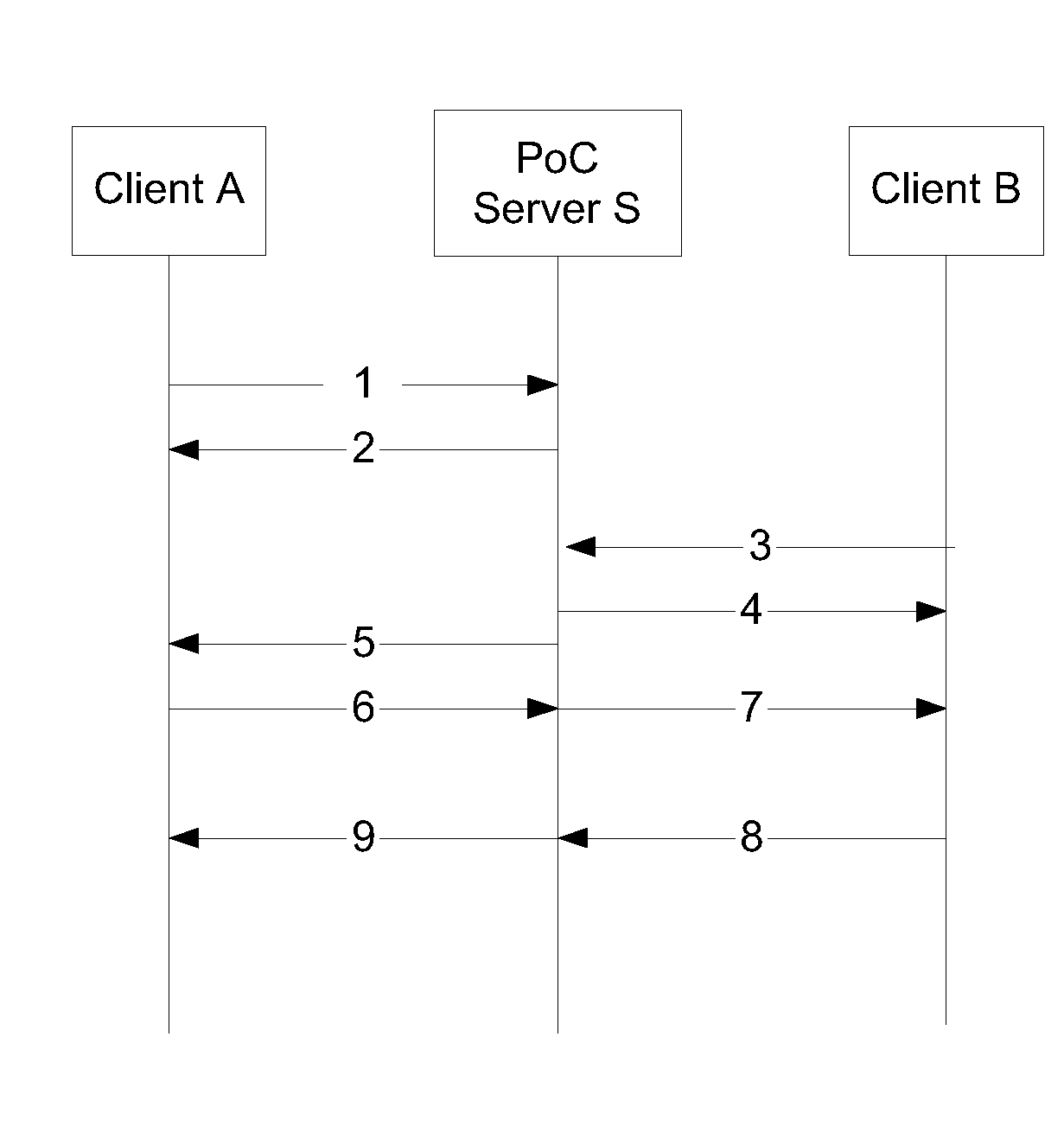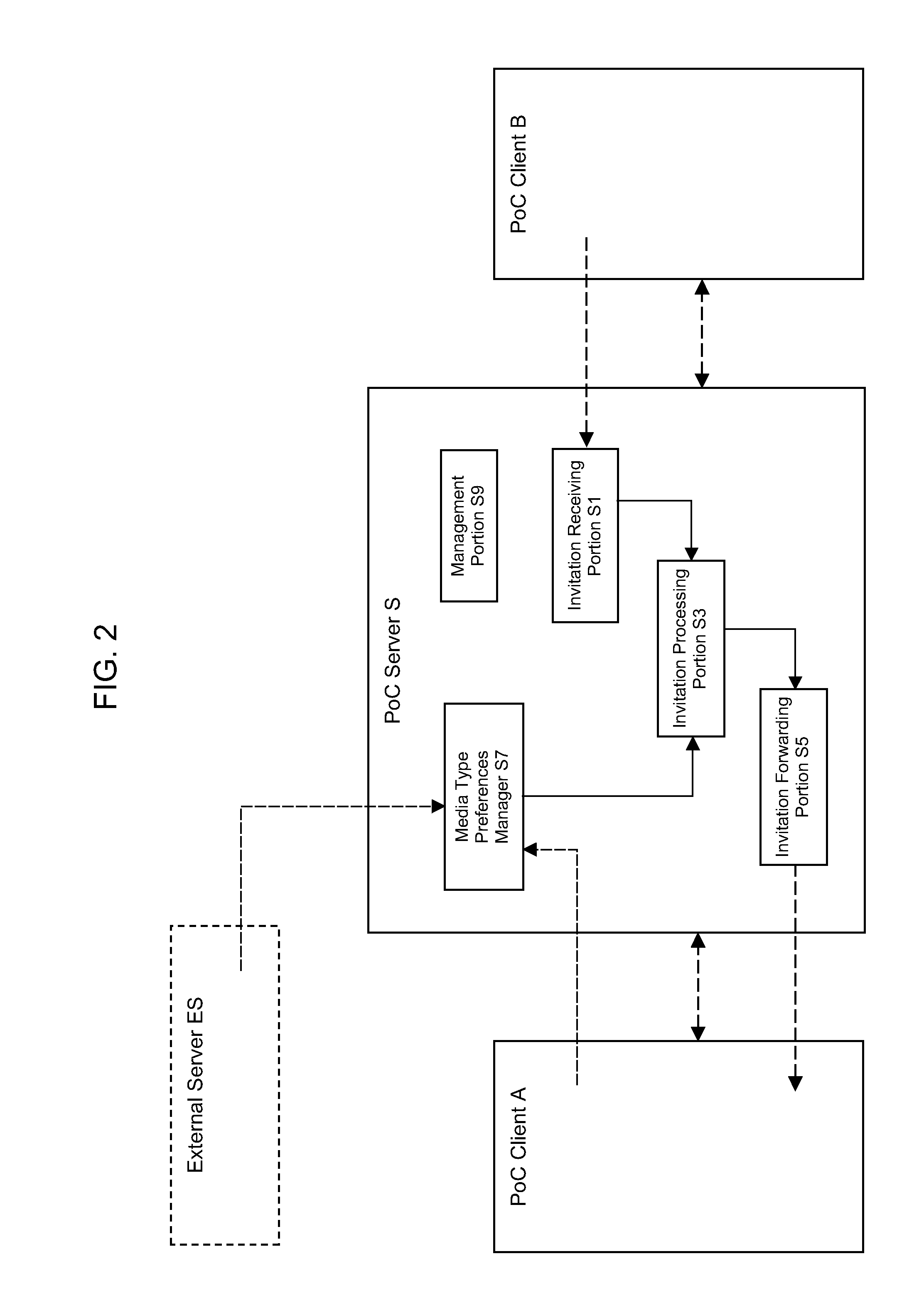Methods and apparatus for push to talk type service
a push-to-talk type and service technology, applied in the field of methods and apparatus for use in a push-to-talk type service, can solve the problems of not being able to communicate between different operator networks, end users or clients may only be able to (or opt to) may only be able to handle a subset of all available media, so as to reduce the traffic of unnecessary control signals, reduce the effect of signalling packages and reducing the traffic of unnecessary
- Summary
- Abstract
- Description
- Claims
- Application Information
AI Technical Summary
Benefits of technology
Problems solved by technology
Method used
Image
Examples
Embodiment Construction
[0048]In one embodiment of the present invention, the handling of the media control parameters (such as which of the SDP parameters will be accepted in the SIP Invite message) is moved to the network (e.g. the PoC Server), thereby overcoming at least some of the limitations that have previously been described. The PoC Server (or other node) may simply remove from the control signalling any media parameters for barred media types, based for example on previous preferences and settings sent by the PoC Client to the PoC Server (or other node).
[0049]An embodiment of the present invention will now be described in more detail with reference to FIGS. 1 and 2. FIG. 1 is a message exchange diagram illustrating the exchange of messages between PoC Clients A and B and a PoC Server S in this embodiment. FIG. 2 is a block diagram schematically illustrating parts of the PoC Server S, as well as the interactions between an external server ES, the PoC Clients A and B, and the PoC Server S. PoC Serv...
PUM
 Login to View More
Login to View More Abstract
Description
Claims
Application Information
 Login to View More
Login to View More - R&D
- Intellectual Property
- Life Sciences
- Materials
- Tech Scout
- Unparalleled Data Quality
- Higher Quality Content
- 60% Fewer Hallucinations
Browse by: Latest US Patents, China's latest patents, Technical Efficacy Thesaurus, Application Domain, Technology Topic, Popular Technical Reports.
© 2025 PatSnap. All rights reserved.Legal|Privacy policy|Modern Slavery Act Transparency Statement|Sitemap|About US| Contact US: help@patsnap.com



